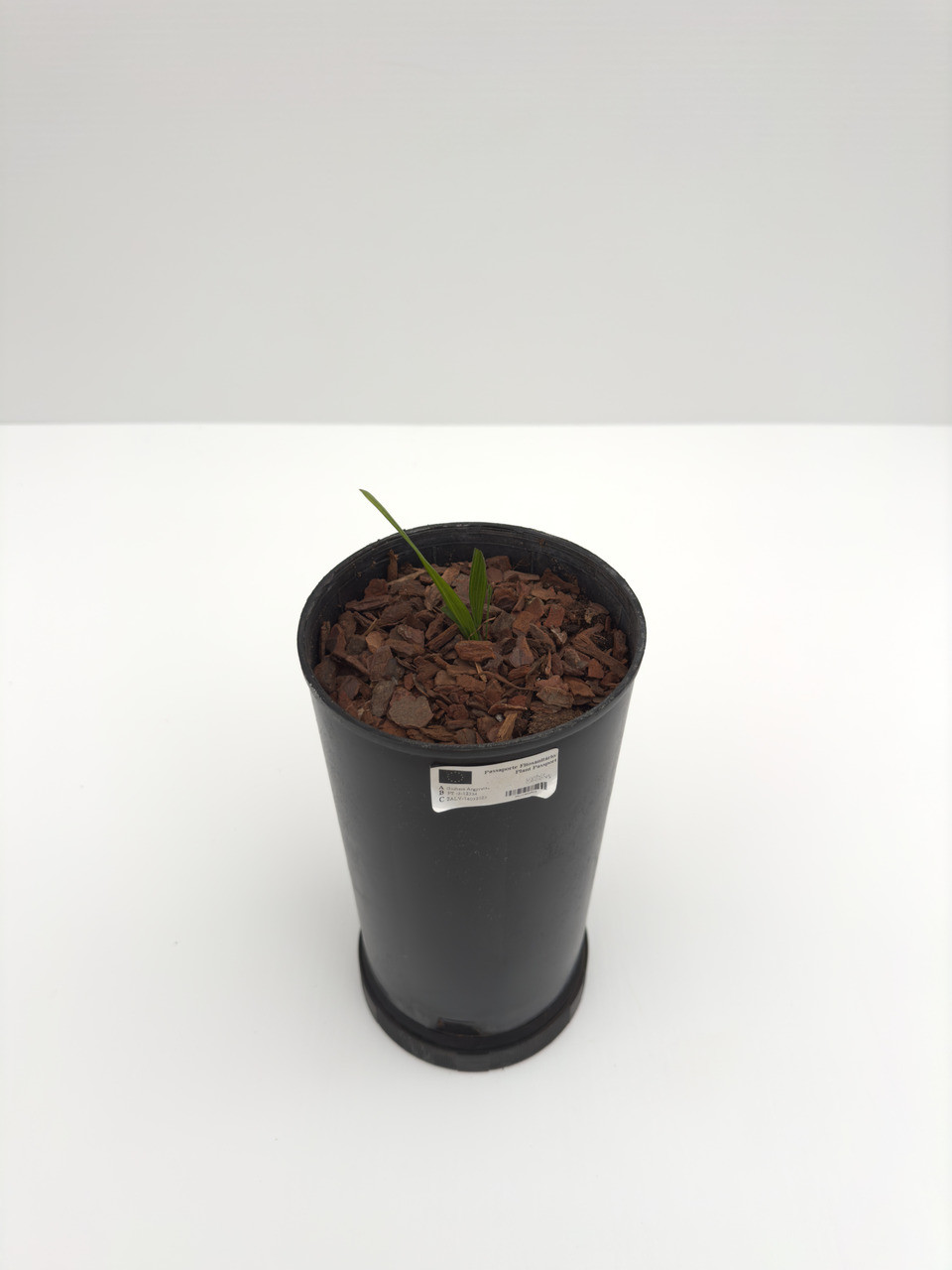Product Description
Habitat and Distribution
China Southeast, and Vietnam.
Description
Low clustering costapalmate fan palm to about 1 m tall; stem decumbent or erect, very short, about 3-5 cm in diam., sometimes up to 0.5 m tall, with very close leaf scars, the stem usually completely obscured by the old leaf sheaths. Leaves several in the crown, spreading; sheath tubular at first, expanding into very sharp needle-like, erect dark brown fibers to about 14 cm long, about 1 mm wide; petiole up to about 1 m long, usually less, much shorter in exposed individuals, about 11 mm wide near the base, very slightly narrowed distally, ± hemispherical in cross section, bearing caducous silky hairs when young; adaxial hastula about 1 x 1 cm, fringed with hairs when young; lamina about 20-60 cm in diam. in mid-line, divided to about 3/4 to 4/5 into up to about 26 single-fold (rarely two-fold) reduplicate segments, up to about 2.5 cm wide, the outermost segments very narrow, the segment tips very briefly bifid, adaxial surface dark green, abaxial surface silvery grey hairy. Inflorescences 30-80 cm long, with 2-5 partial inflorescences branching to the 4th order; rachillae very slender, the pistillate to 50 x 0.5 mm, the staminate usually shorter and even more slender. Staminate flower in bud about 1.5 mm long or less; sepals about 1 x 0.8 mm; corolla about 1.2 mm long, the lobes about 0.8 mm wide; anthers about 0.3 mm in diam. Pistillate flower about 1.5 mm long; sepals about 1 x 0.8 mm; corolla about 1.2 mm, the lobes about 1 mm wide; staminodes minute, the empty anthers about 0.2 mm long; carpels about 0.5 x 0.4 mm. Mature fruit subglobose up to about 6 mm in diam.; epicarp blue-black, waxy; seed about 4-5 mm in diam. (J. Dransfield. 1985)/Palmweb. Editing by edric.
Culture
Requires heavily filtered light in Florida, to maintain a dark green color.
In southern California this is slower growing plant than in the tropics but a pretty hardy and steady grower, being cold tolerant down to at least 25 F and probably below. It tolerates full sun in Los Angeles inland so it is surprising that it seems to handle such a situation in Florida.
Comments and Curiosities
Phenology: Flowers open towards the end of May until June. Fruit ripens at the end of October to November.
This is a dioecious genus.
An awesome palm and perfectly appropriate as an under-story tree and ideally suited to smaller gardens and remains as a small clump its entire life. Native to the limestone mountains and cliffs in tiny crevices often on sheer rock faces in southern China and also found in northern Vietnam. Commonly known as the Silver Back Fan Palm and also known as the Dainty Lady Palm. This can be a difficult palm to grow but some have had success with it even as low as 18°F. The suckering habit will also increase chances of survival in even lower temperatures since new trunks will continually appear. Adaptable and will grow in temperate to cool tropical areas, and will accept light frosts. Hot climates are perfectly acceptable to this tree. This palm is slow growing in the wild, but faster in cultivation with protection, shade, good well drained soil and an adequate supply of water. It does best in warmer, subtropical areas. This is an attractive shrub-like suckering tree with rough, thin and very short trunk if any at all. Will tolerate full sun but leaves will have a yellowish color. The best specimens are usually seen in filtered light and shade screen seems to create the best results. When originally imported into the U.S it was thought to be a Rhapis. Leaves are spoke-like palmate bicolor dark green with bright silvery white and sometimes gold undersides. Leaves are unique in having reduplicate (A shaped - as opposed to V-shaped) leaf segments. The reduplicate characteristic facilitates the shedding of water. At its base are a lot of upwardly pointing spines in a swirl and caution is advised when pruning dead leaves. The flower stalk emerges from among the leaf bases. Seed is round with edible black fruit, sometimes difficult to germinate and may need up to 6 months to sprout. (palmsnc.org)
"Guihaia argyrata previously called Trachycarpus argyrata. When we first found them, it reminded us of a trachycarpus and later confirmed it was not. It grows on limestone mountain with glittering snow white stuff to the underside of the leaves like T. princeps. But it is a very slow grower as compared to the latter which I think is medium one and produces only 3 -4 leaves after 2 years here. G. argyrata has a brother called G. grossefibrosa also growing on the limestone mountains. The difference in appearance between them is that G.argyrata have shorter petioles with white fur whereas G. grossefibrosa have longer ones with white powder at the backside. Both seeds are much smaller than those of T. princeps. The cold hardiness for both species could be around minus -7C to -8 C as indicated by journals." (Garrytsen)









